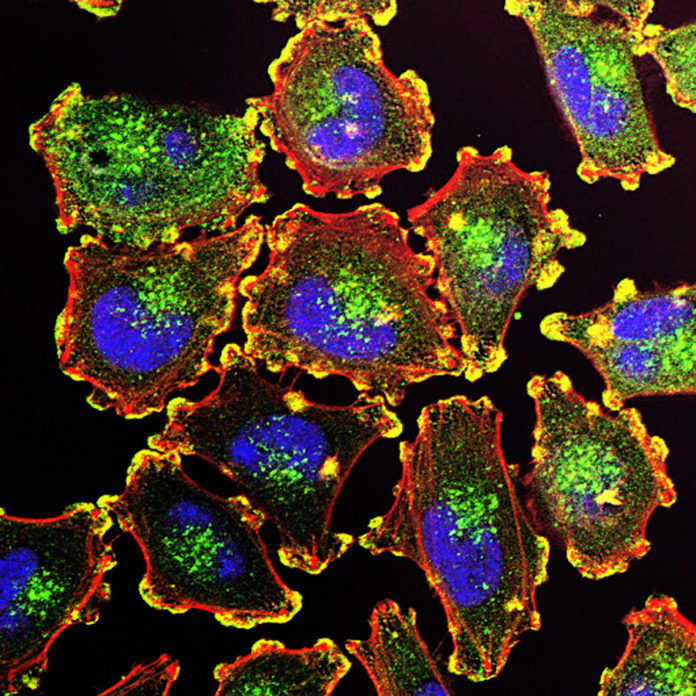A new study conducted at the University of Colorado takes tackling cancer to a whole new level by using gold nanoparticles to fry the tumors. Antibodies attach themselves to antigens in the immune system. Normally, antigens that are on a virus or bacteria have detected any antibodies and as they attach themselves they mark them for destruction. However, during this research, experts engineered an antibody in which to attach to a protein called EGFR.
In another study, researchers attached chemotherapy molecules to antibodies that recognize EGFR and have used this method to target the delivery of chemotherapy treatment. This time, researchers attached to gold nanoparticles to the antibodies and tuned them to experience plasmon resonance in near infrared light. Plasmon resonance is the process that makes nanoparticles vibrate when in certain light frequencies. When the researchers shone a laser onto the nanoparticle with antibody attached, it heated up so much that it literally fried the tumor tissue nearby.
The research was carried on tumors that were on the bladders of mice. These were grown using cells expressing luciferase, the enzyme that makes them glow brightly. This enabled the researchers to see how much cancer was present in the mice. The more the bladder glowed, the more cancer that was present.
The less it glowed, showed the nanoparticles had killed more cancer. Comparing the study that involved injecting mice with EGFR directed nanoparticles to one that involved laser treatment, showed that those that had tumors targeted by gold nanoparticles glowed far less than any in the control group. This is a strong indication that the technique had in fact slowed or reversed the tumor growth altogether.
“We are highly encouraged by these results,” remarked Thomas Flaig, MD, associate dean for Clinical Research at University of Colorado School of Medicine and Chief Clinical Research Officer of UCHealth. “It’s been an interesting problem – solving experience pursuing this technique from a futuristic idea to something that now shows real promise in animal models.”
More News to Read
- Researchers Make a Breakthrough in Neutrino Behavior
- The Medical Implications Weightlessness Has on our Astronauts
- Researchers Discover Lonely Microbes Have Higher rate of Antibiotic Resistance
- Are Nanodiamonds the Answer to Safer Batteries?
- Scientist Identified a Portion of the Brain that Intensified the Desire For Cocaine

